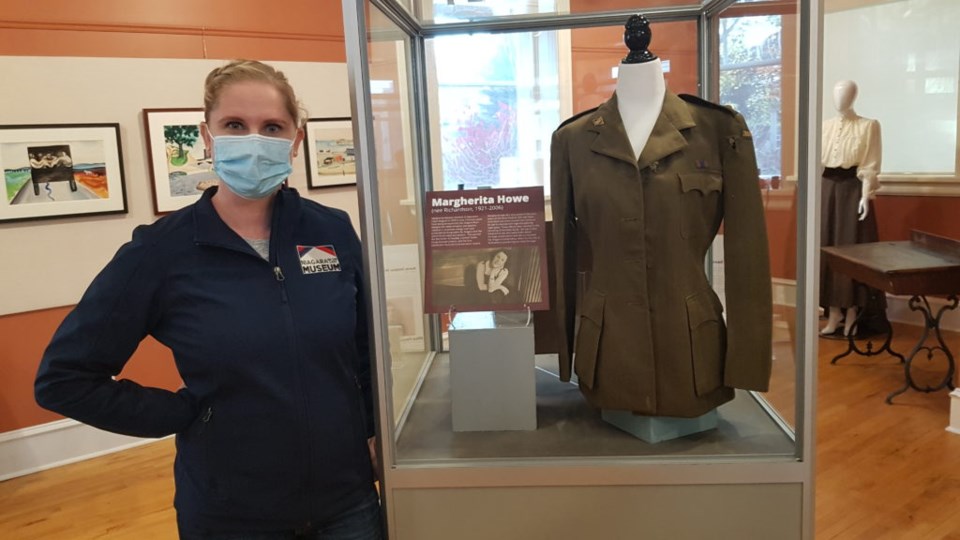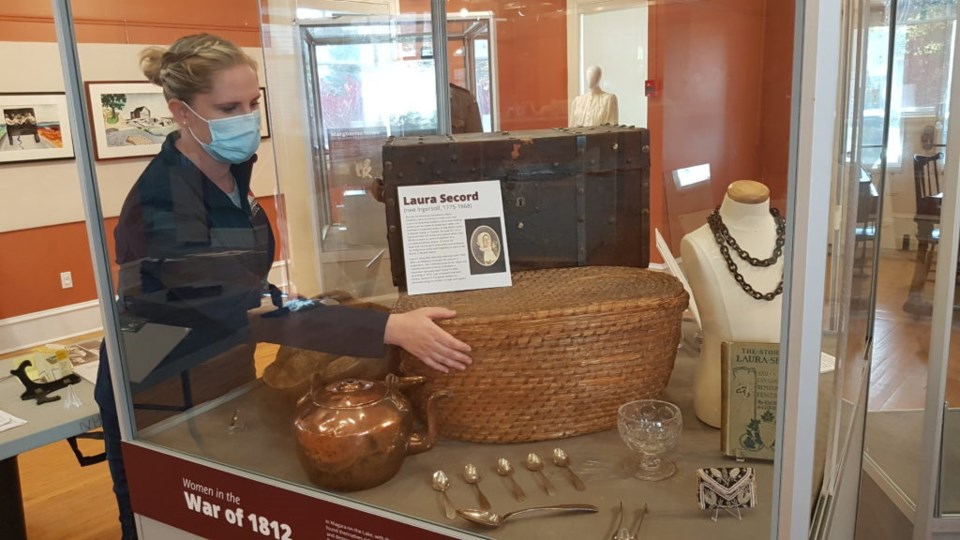
During its recent closure, staff at the Niagara-on-the-Lake Museum have ensured it kept the public engaged through a wide range of online programs, both entertaining and enlightening.
But with Niagara in the red-control zone, and the museum able to reopen, Sarah Kaufman, managing director and curator, is focusing on providing a safe, welcoming and comfortable environment for those who are anxious to start getting out again.
Opening the doors after the lockdown is a little easier second time around, she says, with most of the regional and the provincial protocols, such as sanitizers and signage, already in place. But in other ways, like most people, she says, “we’re wading through muddy waters,” trying to ensure all the current rules are understood and followed.
Thankfully, for a small organization like the museum, she can call the region for advice or clarification — the ready availability of that kind of help is very much appreciated, she says.
While there is some unease in the community about loosening of restrictions, Kaufman says she is “very confident” that, with all the protocols in place, the museum is offering a safe place to visit. They have set their capacity at only 15 people, in a large space, with limited hours that allow time for thorough cleaning when the museum is closed. During the hours the museum is open, 10 a.m. to 4:30 p.m. Saturday, Sunday, Tuesday and Thursday, staff will be regularly sanitizing high-touch areas and washrooms.
She has heard from museum members who are very excited to see the current exhibit, and the staff, “and we’re excited to see them,” she says.
Making Her Mark, an exhibit entirely about women who were influential in the history of Niagara-on-the-Lake, opened in October, and it was one Kaufman and the staff took great pride in.
The time for a museum exhibit entirely about women has come, says Kaufman, celebrating about 25 extraordinary local women, some prominent with names easily recognized, and others who worked quietly behind the scenes, who made their mark on the community.

The launch of Making Her Mark: The Women of Niagara-on-the-Lake is the prelude to a book which features short biographies on the women who are included in the exhibit, who have contributed to the community. It includes women such as Molly Brant, whose role in history dates back the furthest, to Chloe Cooley, Janet Carnochan, and moves forward to those whose local significance is more recent, including Margherita Howe, Laura Dodson, Donna Scott and Blanche Quinn.
The book release has been delayed, as more biographies were added, expected to be out sooner, but has been held up to allow biographies of Scott, who died in March, and Quinn, in May, to be included, says Kaufman.
Brant, born in 1736, was a respected First Nations Clan Mother, and a diplomat, interpreter and ally to the British during and after the American Revolution.
Cooley was an enslaved Black woman who, in 1793, was beaten and bound by her owner and transported across the Niagara River to be sold. Her resistance on this side of the river was witnessed and brought to the attention of Lieutenant Governor John Graves Simcoe, who set in motion legislation to abolish slavery.
Others include Elizabeth Simcoe, Fanny Rowley, the Wesley sisters, Sarah Carter, and Emma Currie, who wrote a book about Laura Secord, who is also part of the exhibit.
Three of the NOTL women are recipients of the Order of Canada, points out Kaufman: Howe for leading the clean-up of the Niagara River; Dodson for her 30 years of working to preserve the town’s heritage; and Scott, a successful businesswoman who was a great supporter of arts and culture, including the museum. “That’s quite impressive,” says Kaufman, who adds there are many “amazing women who stand out in so many different ways.” Quinn, a Second World War veteran and municipal politician, “was a firecracker,” she adds.
This is the first exhibit displayed and the first book published by the museum about local women, says Kaufman.
But the public really didn’t have much of an opportunity to see it before the lockdown, she says, and many locals would have known and have memories of some of the women whose role in history was more recent. The original schedule was for the exhibit to run until April, but it has been extended until the fall.
There are also people ready for and looking forward to chatting in person, rather than participating in virtual discussions, and others who were not able to be part of those meetings, she adds. During the pandemic, the museum newsletter, available online, was printed and hand-delivered by staff to those who are not part of the digital community, says Kaufman, and they let her know that contact was very much appreciated.
At the same time, lectures and discussions are also more accessible to some people when offered virtually, and will continue to be available long after the pandemic has made it necessary, she says. That includes people who are not local but are interested in the historical content the museum offers on provincial and federal history.
But at the moment, what is most exciting to Kaufman is the ability to offer a safe space for people to visit, to enjoy the quiet, the opportunity to learn, and interaction with others.


